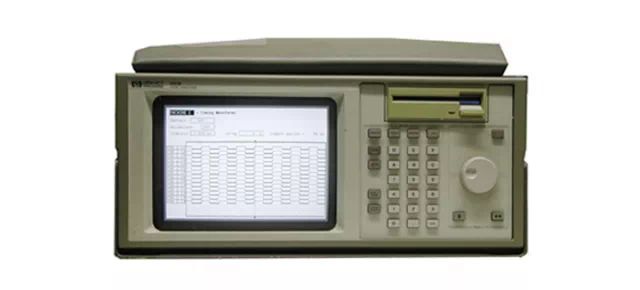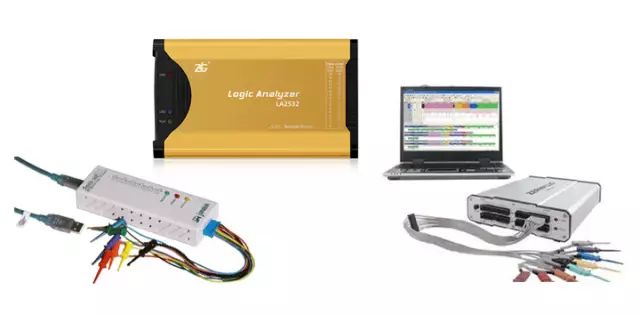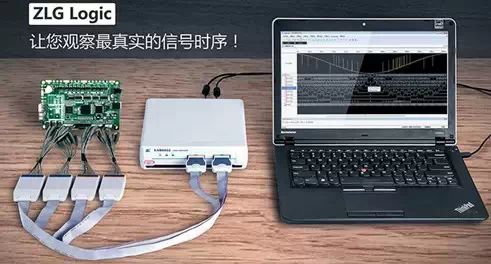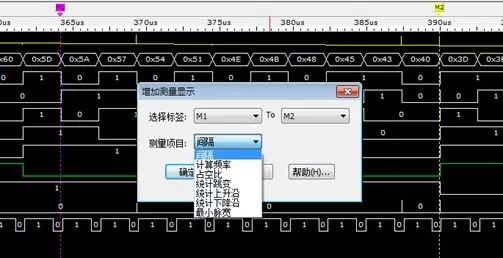
The logic analyzer has always been shrouded in mystery. While most R&D personnel are very familiar with oscilloscopes, they may still be somewhat unfamiliar with logic analyzers. Perhaps you guessed it is an expensive, large instrument with a bulky chassis. Whether right or wrong, at least that’s what I thought when I was in college. It wasn’t until I graduated and started working that I truly understood what a logic analyzer is. Let’s take a look at what a logic analyzer is, its origins, and its functions.
The Birth of the Logic Analyzer
In 1973, the first instrument for testing the logical relationships between multiple signals in digital systems—the logic analyzer—was born. Initially, this was just a project between HP and IBM. Later, HP recognized its commercial value and promoted it as a general-purpose instrument, gaining widespread acceptance among engineers, thus making its mark in the realm of data domain testing instruments. With the rapid development of digital circuits, the demand for logic analyzers has increased significantly, and it has gradually become the ultimate tool for debugging digital circuits.

Figure 2 The predecessor of modern logic analyzers
The Development of Logic Analyzers
In the first few years after the logic analyzer was released, it was quite expensive, and few people had heard of it. The companies that could afford it were all big names, and those capable of developing such instruments were few (mainly HP and Tektronix). During this period, the logic analyzers available for sale were almost all desktop models. In 1994, many international semiconductor and computer companies jointly launched USB communication technology. Around the year 2000, a number of virtual instrument manufacturers rapidly grew both domestically and internationally, and the virtual logic analyzers based on PC were introduced and gradually became mainstream. They commonly use USB communication and have advantages over traditional desktop logic analyzers, including being compact, portable, feature-rich, and cost-effective.

Figure 3 Various virtual logic analyzers
Currently, virtual logic analyzers occupy the main market for logic analyzers. Although their performance is slightly weaker than that of desktop logic analyzers, high-end logic analyzers are still predominantly desktop models. However, the performance gap between the two is narrowing, and in most cases, users only need a virtual logic analyzer to solve their problems. Additionally, the procurement cost is lower and the application is more flexible, making the advantages very apparent.

Figure 4 Virtual logic analyzers become mainstream
Although virtual logic analyzers are already very mature, there are still shortcomings, such as the inability to display waveforms in real-time under high-speed sampling conditions. It is believed that this situation will not last long. With the development of technology, the bandwidth of serial communication has been significantly improved (USB 3.0), and virtual logic analyzers are expected to quickly enter the era of real-time waveform display, and adding analog input channels to logic analyzers has also become a trend.
The Role of Logic Analyzers
A logic analyzer, as the name suggests, is an instrument for analyzing the logical timing of digital signals. In digital circuits, signals are transmitted through ordered binary encoding of 0s and 1s. When the “order” becomes chaotic or there is a time deviation, the communication error rate can be very high, leading to abnormal operation of electronic systems.
In terms of working mechanism, virtual logic analyzers mainly perform high-speed data acquisition and then use USB interfaces to upload the data to computers. Relying on the powerful data processing capabilities of modern computers, the accompanying specialized logic analysis software can quickly complete high-difficulty analysis and display of a large amount of waveform data while providing a friendly and convenient human-computer interaction experience.

Figure 5 The function of the logic analyzer
Logic analyzers have extremely high sampling rates, capable of accurately capturing and displaying multiple digital signals, and providing comprehensive testing and measurement methods to quickly identify timing issues, which is the most common and basic function.

Figure 6 Timing analysis and measurement
Of course, in addition to analyzing signal timing, logic analyzers also have many advanced functions, such as executing disassembly, protocol decoding, and protocol analysis based on waveforms, achieving joint analysis of waveforms with code and data to quickly locate circuit issues.

Figure 7 Protocol analysis and decoding


《High-Speed Dictionary》—-SI-list【China】sincerely presents, updated on 2017.06.12! Come and collect it!
SI-list【China】WeChat Group
For hardware high-speed design, please add the group owner and indicate your company

Signal Integrity and Power Integrity Research

SI-list【China】WeChat group and official account focus on high-speed link design, signal integrity/power integrity simulation, testing, and verification-related technical exchanges and experience sharing, managed by Disacon Technology (Shenzhen) Co., Ltd. For business inquiries, please scan the QR code below.

▼ Click here for more details about DesignCon